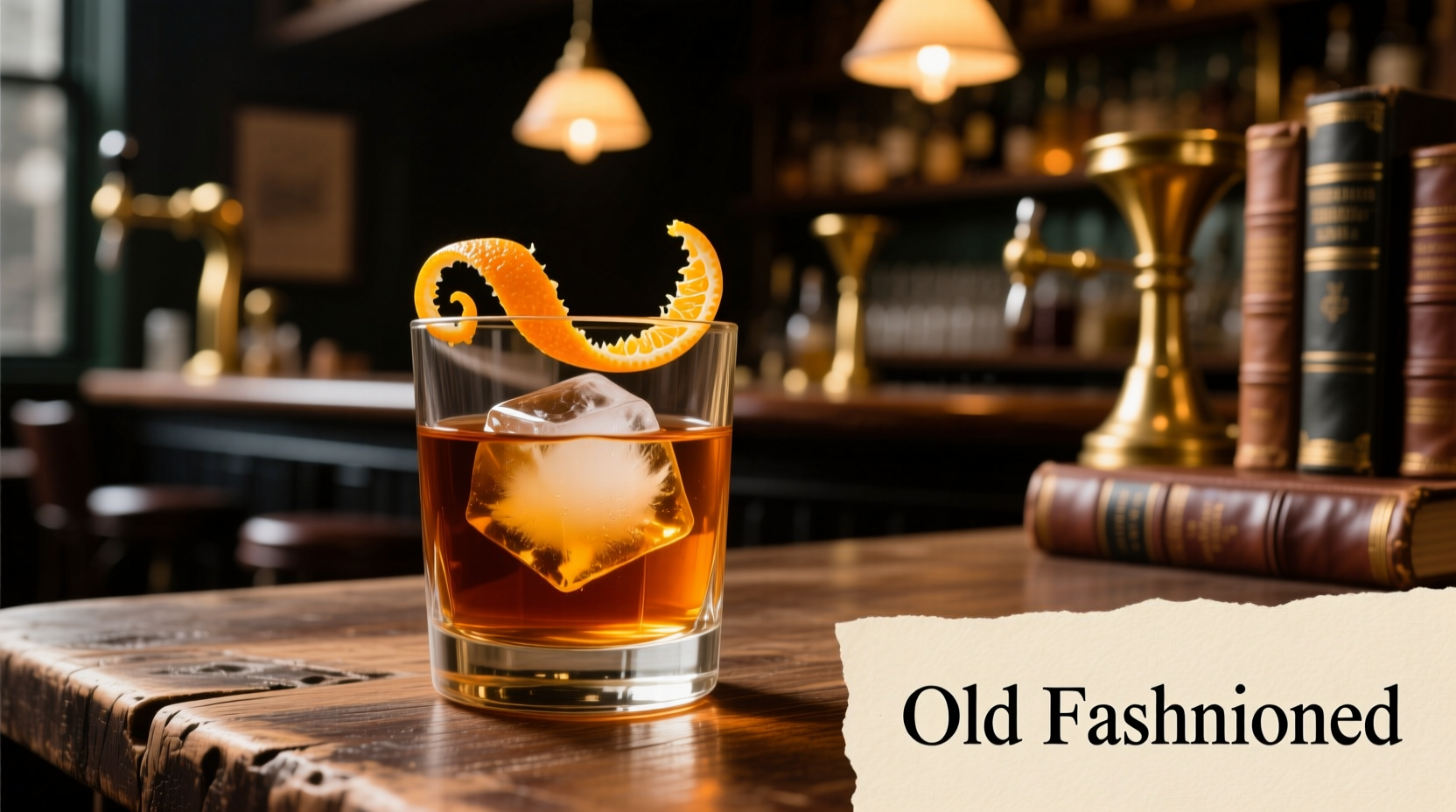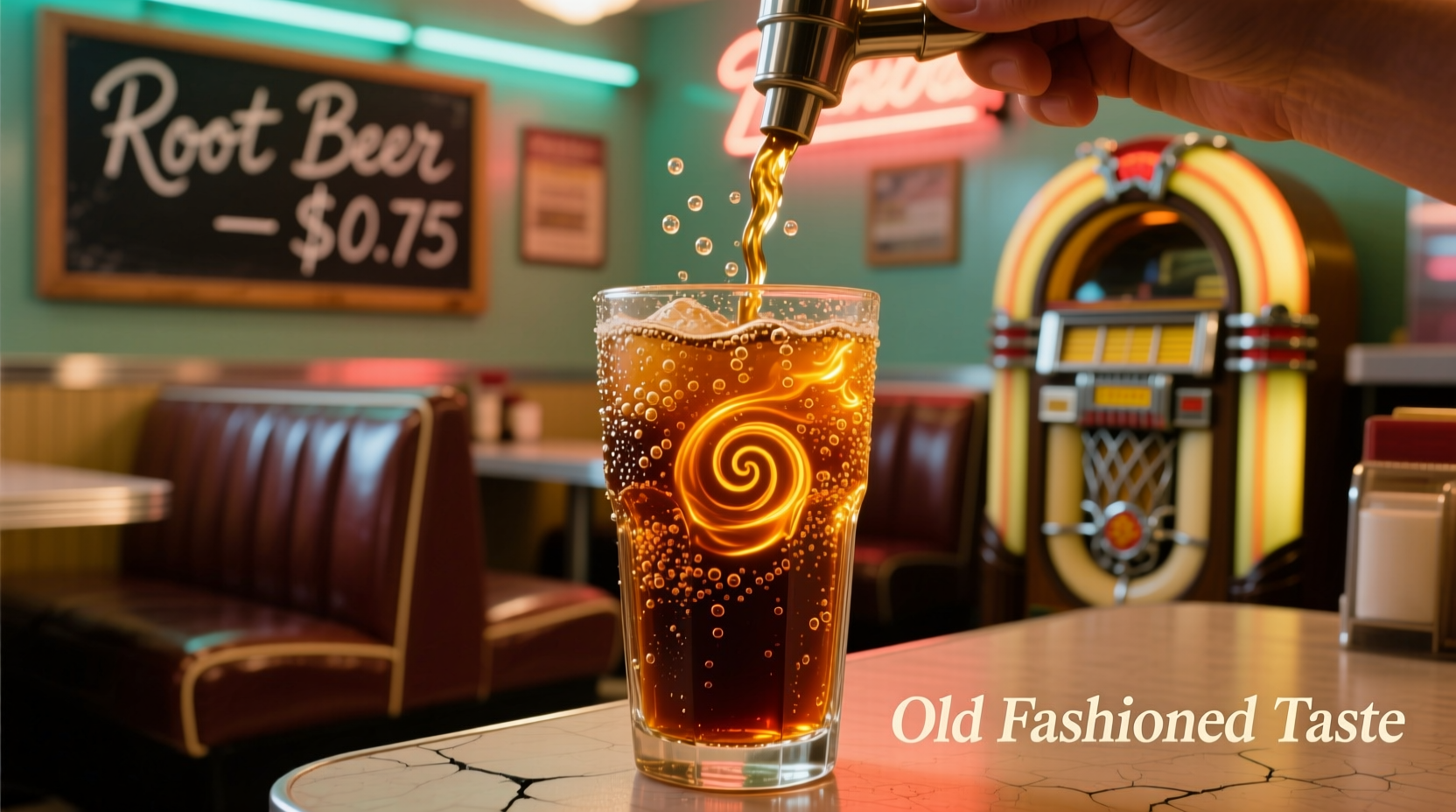The Old Fashioned isn't just another cocktail—it's the granddaddy of them all, and its distinctive taste has captivated drinkers for nearly two centuries. When properly made, this deceptively simple drink offers a sophisticated flavor journey that reveals why it's remained a classic through changing cocktail trends.
The Core Flavor Experience: What You Actually Taste
When that first sip of a well-crafted Old Fashioned touches your tongue, you're experiencing a carefully orchestrated balance of five essential taste elements:
- Sweetness - From the sugar cube or simple syrup, providing a smooth foundation
- Bitterness - From aromatic bitters, adding complexity and depth
- Alcohol warmth - From the whiskey base, delivering the spirit's character
- Citrus brightness - From the expressed orange twist, cutting through richness
- Subtle spice - From the bitters' botanical components enhancing the whole
This isn't a one-note drink. As the ice slowly dilutes the cocktail, the flavor profile evolves—starting with intense whiskey notes that gradually mellow into a more integrated, balanced experience. The initial strong alcohol presence gives way to reveal nuanced vanilla, caramel, or baking spice notes depending on your whiskey choice.
How Ingredients Shape Your Old Fashioned Taste Experience
While the Old Fashioned recipe appears straightforward—whiskey, sugar, bitters, citrus—the specific ingredients you choose dramatically impact the final flavor profile. Understanding these variables helps explain why your Old Fashioned tastes the way it does.
| Whiskey Type | Primary Flavor Notes | Taste Impact on Old Fashioned |
|---|---|---|
| Bourbon (wheated) | Vanilla, caramel, honey | Softer, sweeter profile with rounded edges |
| Bourbon (rye-heavy mash bill) | Spice, oak, fruit | More complex with baking spice notes |
| Rye whiskey | Pepper, cinnamon, herbal | Sharper, spicier profile with pronounced bite |
| Blended whiskey | Muted, generic | Flatter taste with less distinctive character |
The choice between bourbon and rye fundamentally alters your Old Fashioned's personality. Bourbon-based versions tend toward sweetness with vanilla and caramel notes that harmonize beautifully with the sugar component. Rye-based versions deliver a spicier, drier experience where the bitters' herbal notes shine through more prominently.
Even small variations in preparation technique affect taste. Muddling the sugar cube properly creates a subtle syrup that integrates better than pre-made simple syrup. The quality of your bitters matters significantly—Angostura's distinctive clove and cinnamon notes create a different profile than orange or chocolate bitters variations.

The Flavor Evolution: How Temperature and Dilution Transform Taste
One of the Old Fashioned's most fascinating characteristics is how its flavor profile evolves as you drink it. This isn't a static experience—the cocktail literally changes in your glass:
- Initial pour - Strong alcohol presence with pronounced whiskey character
- After 2 minutes - Sugar and bitters begin integrating; alcohol heat softens
- At the halfway point - Optimal balance where all elements harmonize
- Toward the end - Dilution reveals subtle botanical notes previously masked
This evolution explains why experienced drinkers savor an Old Fashioned slowly. The ice's gradual melting performs essential work—reducing the alcohol's burn while allowing the complex flavor components to emerge sequentially. Rushing the drink means missing the nuanced transformation that makes this cocktail special.
How the Old Fashioned Compares to Similar Cocktails
Understanding what makes an Old Fashioned unique requires comparing it to similar whiskey cocktails. While they share base ingredients, their flavor profiles differ significantly:
- Manhattan - Sweeter and richer due to vermouth, with less pronounced citrus notes
- Whiskey Sour - Brighter acidity from lemon juice dominates the profile
- Boulevardier - More bitter and complex from Campari, with less sweetness
- Rob Roy - Similar to Manhattan but Scotch-based, with smokier notes
The Old Fashioned stands apart through its purity—no additional liqueurs or juices complicate the flavor profile. This simplicity makes ingredient quality paramount; flaws in any component become immediately apparent.
Why Some Old Fashioneds Taste Different: Common Variations Explained
You might have noticed that not all Old Fashioneds taste the same. Several legitimate variations exist that intentionally alter the flavor profile for different preferences:
The Wisconsin Old Fashioned - Uses brandy instead of whiskey with muddled fruit, creating a sweeter, fruit-forward profile that cocktail purists consider sacrilege but remains popular in the Midwest.
The Tequila Old Fashioned - Substitutes reposado tequila for whiskey, adding agave notes and earthiness while maintaining the classic balance.
The Smoked Old Fashioned - Adds a layer of complexity through smoked wood elements, enhancing the whiskey's natural oak notes.
These variations demonstrate how the Old Fashioned template can accommodate different taste preferences while maintaining its essential character. The key question isn't whether it's authentic, but whether the resulting flavor profile achieves balance and intentionality.
Perfecting Your Old Fashioned Taste: Practical Tips
Want to ensure your Old Fashioned delivers that classic, balanced taste? Consider these evidence-based adjustments:
- Sugar quality matters - Use a high-quality simple syrup (2:1 ratio) or properly muddle a sugar cube
- Bitters balance - Standard is 2-3 dashes, but adjust based on bitters' intensity
- Ice quality is crucial - Large format ice melts slower, preserving optimal dilution rate
- Citrus technique - Express the oils over the drink before garnishing for maximum aroma impact
Remember that personal taste preferences legitimately vary. Some prefer a drier profile with less sugar, while others enjoy a sweeter balance. The hallmark of a well-made Old Fashioned isn't adhering to arbitrary ratios, but achieving intentional balance where no single element dominates.
Why the Old Fashioned's Taste Has Endured
The Old Fashioned's flavor profile has survived cocktail revolutions because it satisfies fundamental taste principles. Food science research shows humans are naturally drawn to balanced sweet-bitter combinations, which explains why this particular ratio has remained appealing across generations.
According to flavor chemists at the University of California's Department of Food Science, the Old Fashioned hits multiple pleasure points simultaneously: the sugar activates reward pathways, the bitters provide complex botanical stimulation, and the alcohol warmth creates physical sensation that enhances flavor perception. This multisensory experience creates a more satisfying drinking experience than simpler sweet cocktails.
Old Fashioned Taste FAQ
Is an Old Fashioned sweet or bitter?
A properly made Old Fashioned achieves balance between sweetness and bitterness. The sugar provides a sweet foundation that's counterbalanced by the aromatic bitters. Neither element should dominate—the ideal Old Fashioned has a harmonious blend where the sweetness rounds out the bitterness without being cloying.
Why does my Old Fashioned taste too strong?
An Old Fashioned that tastes overly strong typically hasn't had enough time to dilute properly. The ice needs time to melt slightly and integrate the components. Using small ice cubes that melt too quickly can also create an uneven drinking experience. Try using a single large ice cube and allow 2-3 minutes for proper integration before drinking.
What's the difference in taste between bourbon and rye Old Fashioneds?
Bourbon Old Fashioneds feature sweeter notes of vanilla and caramel that harmonize with the sugar component, creating a smoother, rounder profile. Rye-based versions deliver spicier notes of pepper and baking spices that interact more prominently with the bitters, resulting in a drier, more complex flavor with a pronounced bite. The choice fundamentally changes the cocktail's personality.
Why does an Old Fashioned taste better with an orange twist?
The orange twist provides essential citrus oils that aromatically cut through the cocktail's richness. When expressed over the drink, these volatile oils create a fragrant top note that enhances flavor perception without adding liquid acidity. The citrus aroma activates different olfactory receptors, making the entire flavor profile more complex and balanced.
How should a properly made Old Fashioned taste throughout the drink?
A well-made Old Fashioned evolves as you drink it. Initially, you'll taste the strong whiskey character. After 2-3 minutes, the sugar and bitters integrate, softening the alcohol heat. At the halfway point, all elements achieve perfect balance. Toward the end, increased dilution reveals subtle botanical notes previously masked. This evolution is part of what makes the cocktail special.











 浙公网安备
33010002000092号
浙公网安备
33010002000092号 浙B2-20120091-4
浙B2-20120091-4